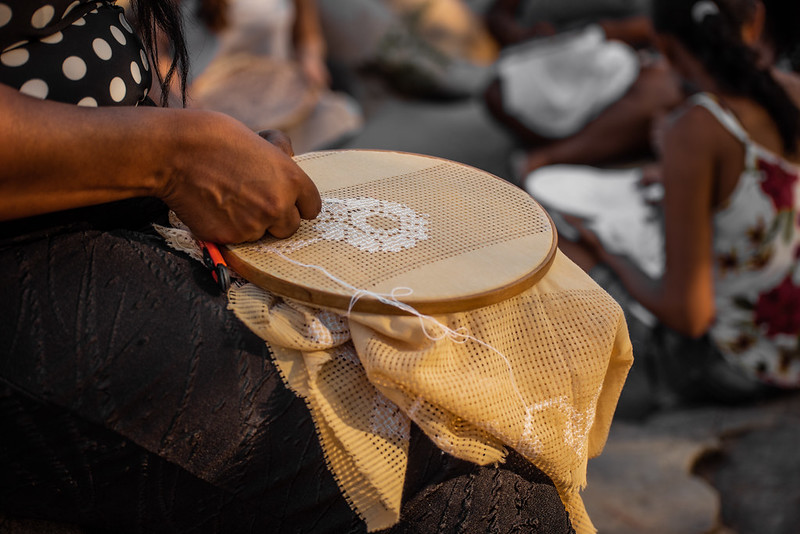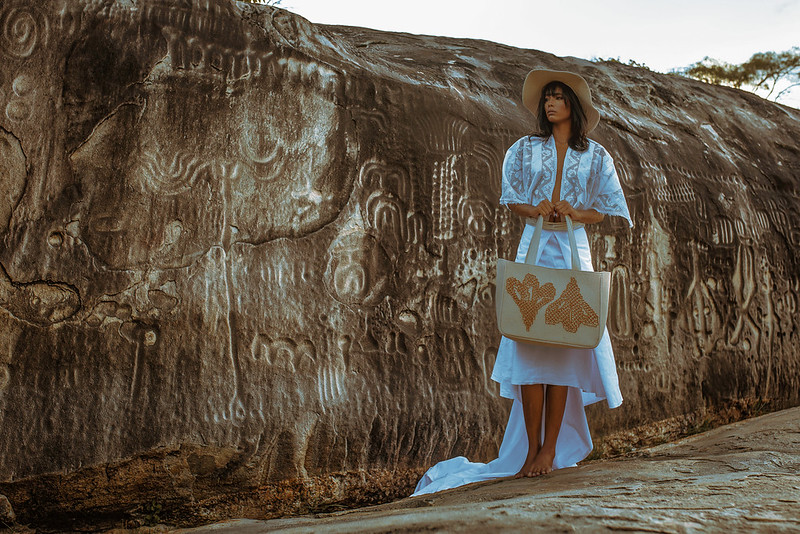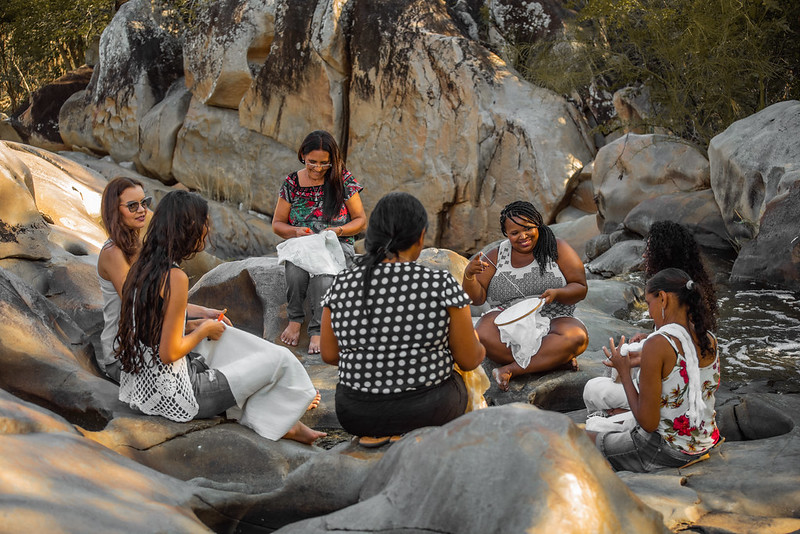Ingá’s Labyrinth embroidery enters the international fashion route

In 2022, the artisanal labyrinth technique will be presented at the most important global events in the fashion sector: at Première Vision Paris, in February, at Premium Berlin, in July; and at Brasil Eco Fashion Week, in Milan Fashion Week, in September.
The initiative is the result of the Inovando o Labirinto de Ingá Program, an effort to make the craft technique more valued and sustainable. “The objective is to preserve, innovate, train and, above all, transform the labyrinth technique into an economically viable craft for artisans”, declares Robério Lopes Burity, the city’s mayor.
Despite being recognized as an Intangible Heritage of the State of Paraíba, the art of labyrinth embroidery has become a stagnant craft, reduced to layette items for the house. Due to its low commercial value, the artisanal technique dominated mainly by rural women runs the risk of falling into oblivion. The few artisans in the city of Ingá have been making labyrinth lace just as a leisure activity — leaving behind the culture of knowledge passed down from generation to generation. Thus, as artisanal work does not bring economic sustainability, it takes away young people’s interest in the craft.

With innovations from Natural Cotton Color, labyrinth embroidery can generate gains of more than 500% for lacemakers and regain interest in crafts in Ingá, Paraiba
The samples that started the labyrinth lace innovation project emerged with the request for samples of this technique by the company Natural Cotton Color, a sustainable fashion brand from Paraíba based in João Pessoa, Paraíba, which participates in international fashion events.
“I always wanted to put labyrinth lace in my collections, but I needed to make sure that I had qualified labor to produce 10, 12 and 15 meters of embroidered fabrics within a specific deadline”, explains Francisca Vieira, the company’s CEO. For this, she suggested innovations that ensured productivity and generated a much higher income for the artisans.
Fashion as an opportunity for economic development
According to research with artisans, it takes 16 hours of work to produce a tray cloth that is sold to middlemen for R$ 20.00. The product is sold at craft fairs, especially in the Northeast. While the minimum wage in Brazil is equivalent to R$5.51 per hour, labyrinthine workers can only earn the equivalent of R$1.25 reais per hour. “If they only depended on the labyrinth, these women would die of hunger”, summarizes the teacher and artisan Janaína Alves.
With the exchange of common fabric for other more noble wefts, of the sewing thread for another thicker one, the remuneration reached R$ 6.82 per hour – representing an increase of more than 500% in the value of manual work. It became clear to the Ingá city hall the need for a training program and a new look at traditional embroidery in the region.

The labirinto embroidery was recognized as an Intangible Heritage of the State of Paraíba
For artisan Janaína, a professor at the Inovando o Labirinto de Ingá program, the main innovation is the entry of labyrinth lace into the fashion market, something she has always dreamed of. “Fashion is a sector with a lot of demand and with a greater added value. Being paid by the hour and not by the piece, there is a new perspective for the artisans of labyrinth lace, making it, in fact, sustainable”, she celebrates.
With these results, the first group has already received applications from 20 women, but the idea is to reach the 400 women artisans in the region who already master other techniques. According to the Ingá City Hall office, the target audience is the artisans who accept the proposal for innovation in the entire production process of the labyrinth lace technique.
“There are other companies that intend to pay by the hour worked. That’s because they don’t want to buy a labyrinth without design and in low quality fabrics. These companies want innovation and are willing to pay at least 300% more than what was paid by middlemen”, says the mayor.
In this way, the program, in addition to improving the artisans’ economic performance, should attract the attention of local youth. “At the last meeting for the presentation of the program, there were young people aged 16, 17 and 20, which we hadn’t seen in a long time”, celebrates Burity. The expectation is to go beyond the appreciation and expansion of the labyrinth to the market. “We want to praise, recognize and preserve the work of the labyrinths so that our culture and artisanal wealth will remain alive for generations to come,” said Burity.

The Labyrinth handicraft is part of the Ingá culture. The city is known for the archaeological site with cave inscriptions in low relief.
The businesswoman of Natural Cotton Color Francisca, responsible for taking the technique to the national and international market, and co-creator of the program, highlights that the training action should be focused on generating economic sustainability by attracting more companies from other Brazilian states. “To be viable, there should also be a designer in the mediation between new buyers and artisans, focused on technical solutions and the creation of new products for fashion and decoration”, she says.
The program developed by the municipality of Ingá involves the districts of Chã dos Pereiras and Pontina and the Quilombola community of Pedra D’água. The prefecture will provide the learning materials and certificate of completion. The “Innovating the Labyrinth of Ingá program” is supported by the Executive Secretariat for Food Security and Solidarity Economy, together with the Government of the State of Paraíba.

A capacitação aumenta os ganhos, promove a valorização do trabalho artesanal, eleva a autoestima e promove o convívio social
 Organic and Natural Cotton Color
Organic and Natural Cotton Color